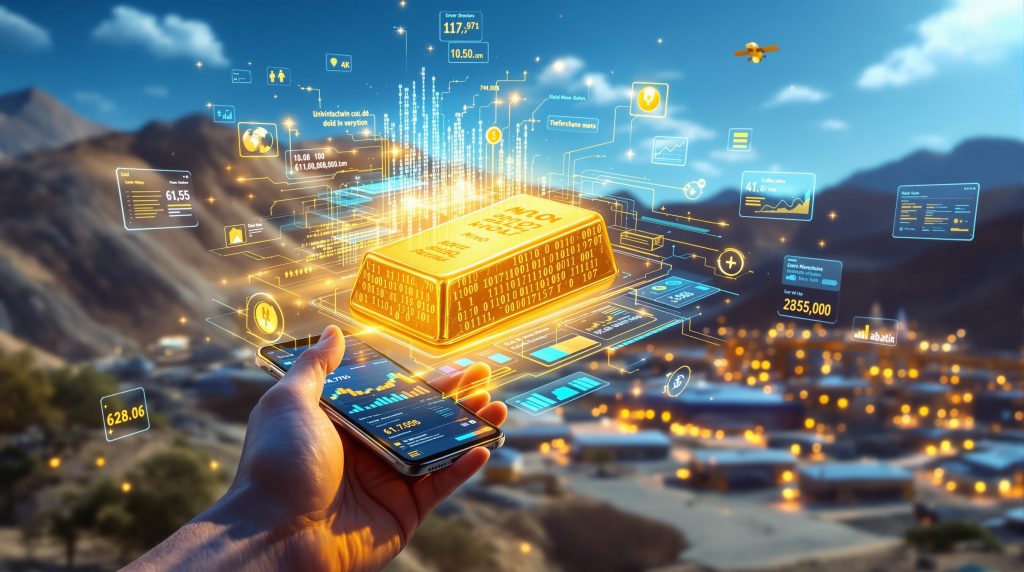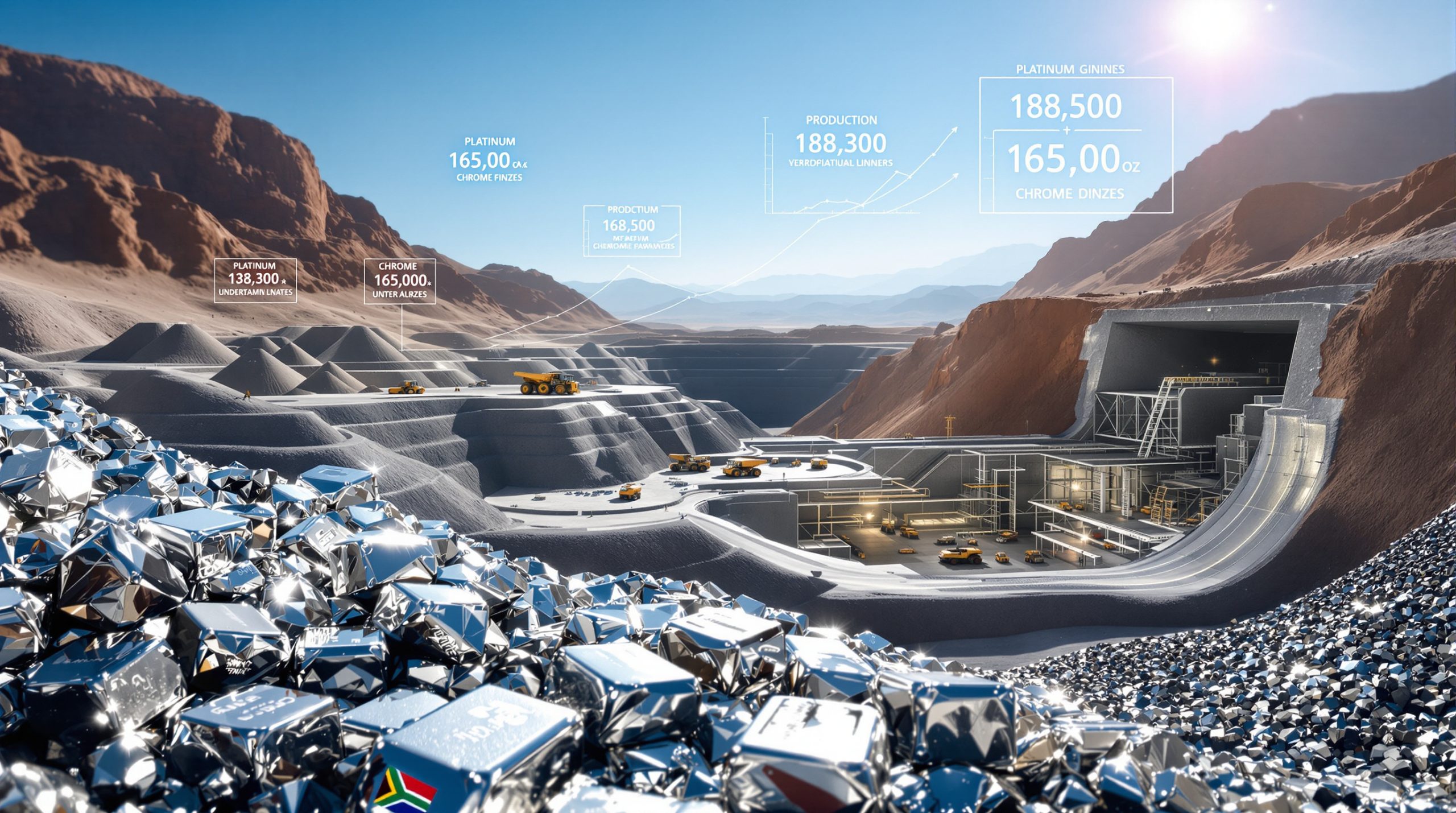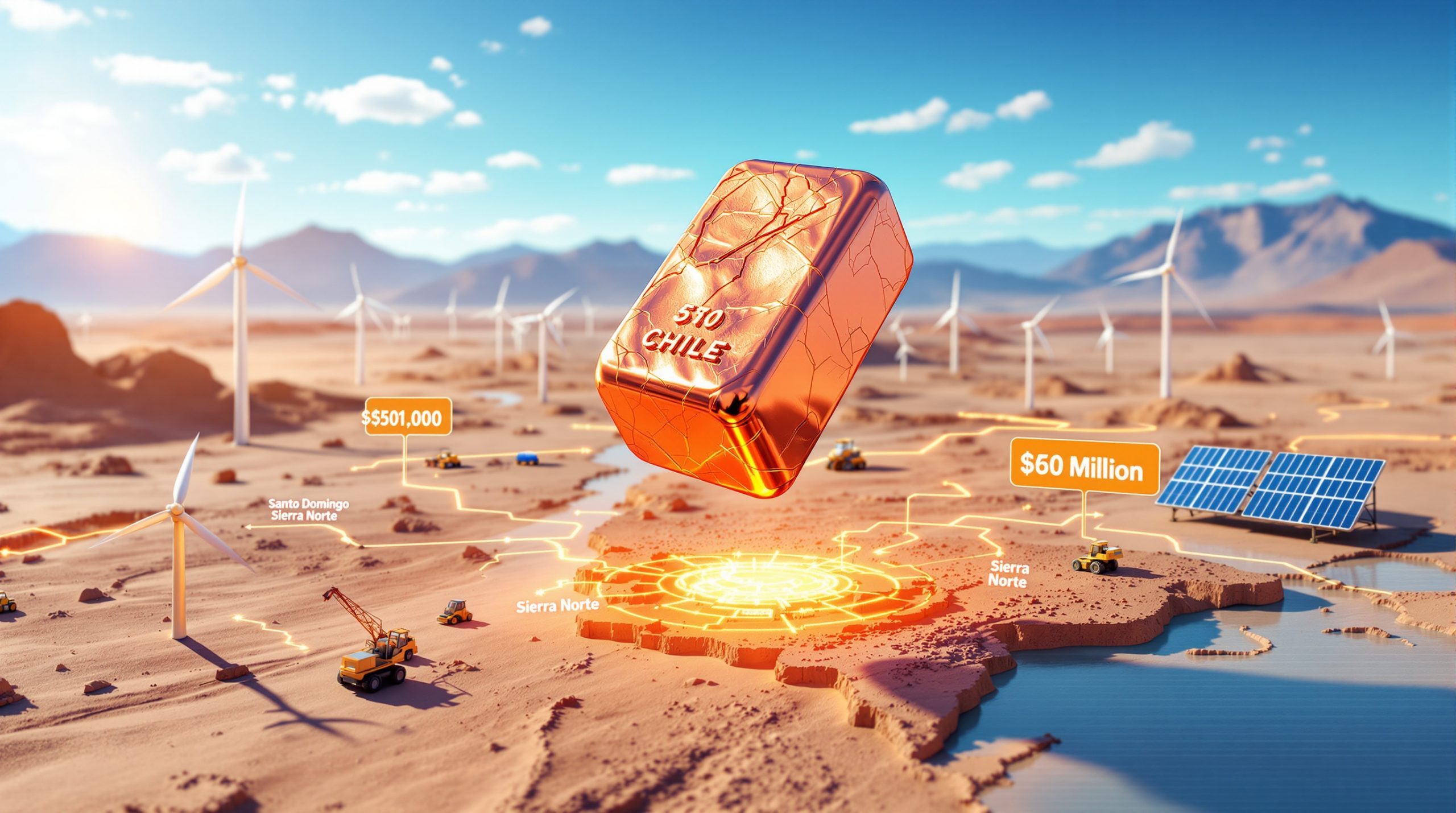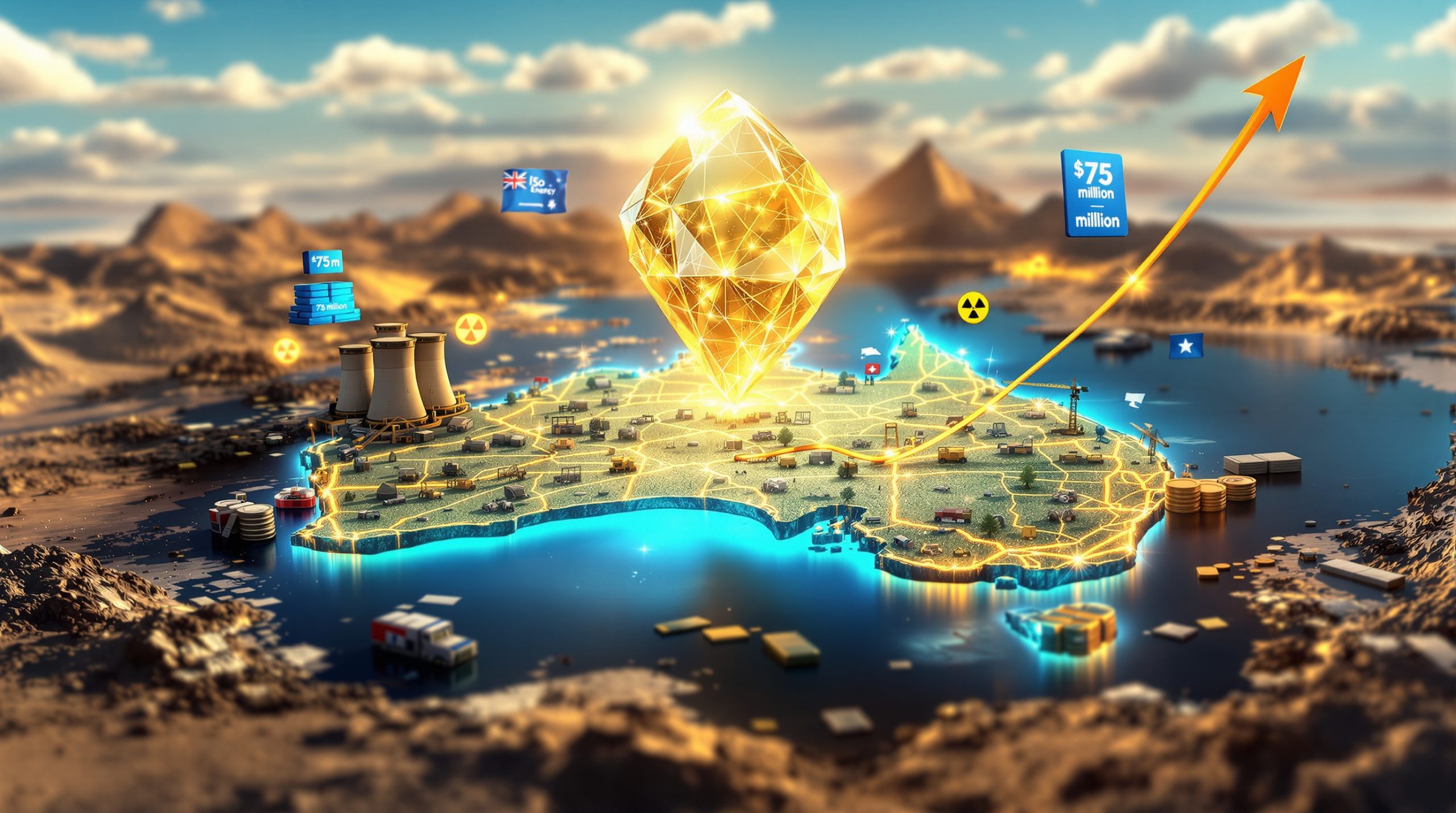Digitalisation in the Gold Industry: Transforming an Ancient Asset
In the rapidly evolving digital landscape, the gold industry stands at a pivotal crossroads where traditional practices meet cutting-edge innovation. With global gold holdings by investors and central banks valued at approximately $5.1 trillion, the transformation through digitalisation presents both challenges and unprecedented opportunities for this enduring asset class. Digital technologies are revolutionizing every aspect of gold—from mining operations to trading platforms—creating new possibilities for this ancient asset to thrive in modern financial ecosystems.
What Digital Technologies are Reshaping Gold Mining Operations?
AI and Machine Learning Applications
Artificial intelligence and machine learning are fundamentally transforming how gold deposits are identified and extracted. These sophisticated technologies analyze vast datasets from geological surveys, historical mining records, and satellite imagery to identify promising exploration sites with greater precision than traditional methods. The implementation of AI in drilling applications has enabled mining companies to optimize drilling locations, significantly reducing exploration costs while improving discovery rates.
AI-powered systems enhance operational efficiency across multiple fronts by optimizing extraction processes based on real-time ore quality data, reducing energy consumption through intelligent equipment management, minimizing waste through precision mining techniques, and automating quality control processes for more consistent output.
Mining operations utilizing AI have reported productivity increases of up to 20% while simultaneously reducing operational costs by 15-25%, demonstrating the tangible benefits of these digital implementations.
IoT and Real-Time Monitoring Solutions
The Internet of Things (IoT) has enabled unprecedented visibility into mining operations through networks of connected sensors and devices. These sophisticated systems provide continuous monitoring of equipment performance, environmental conditions, worker locations, and production metrics.
Real-time data collection allows mining companies to make informed decisions instantly rather than relying on periodic reports. For example, vibration sensors can detect early signs of equipment failure, allowing maintenance teams to address issues before they cause costly downtime or safety hazards.
A typical modern gold mine may deploy thousands of IoT sensors throughout its operations, generating terabytes of actionable data daily that directly translate to operational improvements and cost savings.
Digital Twins and Virtual Mine Management
Digital twin technology creates comprehensive virtual replicas of physical mining operations, enabling operators to simulate different operational scenarios without disrupting actual production, test process improvements in a risk-free environment, train staff on complex procedures safely, and visualize underground operations that would otherwise be difficult to monitor.
These virtual environments integrate data from multiple sources to create models that reflect real-world conditions with remarkable accuracy. One major gold producer implemented digital twin technology and reported a 30% reduction in unplanned downtime and a 15% improvement in overall equipment effectiveness.
How is Blockchain Revolutionizing Gold Supply Chains?
Traceability and Provenance Verification
Blockchain technology provides an immutable record of gold's journey from mine to market, addressing longstanding concerns about ethical sourcing and authenticity. Each transaction is permanently recorded on a distributed ledger, creating a transparent chain of custody that verifies gold's origin, documents compliance with environmental and labor standards, confirms product authenticity, and enables informed purchasing decisions.
The World Gold Council's Gold Bar Integrity programme exemplifies this approach, using distributed ledger technology to create a secure global database of gold bars with verifiable provenance information. This system allows stakeholders to track gold from mine to vault, ensuring its legitimacy and ethical sourcing.
Smart Contracts and Automated Transactions
Smart contracts—self-executing agreements with terms written in code—are streamlining gold transactions by automating payment releases when predefined conditions are met, reducing paperwork, minimizing the risk of disputes through clear terms, and enabling faster settlement times compared to traditional methods.
These automated systems have demonstrated the ability to reduce transaction costs by up to 70% while increasing security and reliability throughout the supply chain. A major bullion bank implementing smart contracts for gold trading reported that settlement times decreased from T+2 (two days) to less than an hour.
What Impact is Digitalisation Having on Gold Trading and Investment?
Tokenisation and Digital Gold Assets
The tokenisation of gold—representing physical gold as digital tokens on blockchain platforms—is transforming how people invest in and trade the precious metal. This innovation enables fractional ownership, facilitates instant transfers, reduces storage costs, and creates opportunities for new financial products and services.
Platforms like I-ON Digital Corp are pioneering this approach by converting physical gold into blockchain-backed digital securities, providing investors with direct, enforceable claims on physical gold while offering the convenience of digital transactions.
The tokenized gold market has grown exponentially, with over $1 billion in gold-backed tokens now in circulation, making gold accessible to a broader range of investors globally.
Enhanced Market Accessibility and Liquidity
Digital platforms are democratizing access to gold markets by reducing minimum investment requirements, eliminating geographical barriers, providing 24/7 trading capabilities, and offering transparent pricing with lower transaction fees.
These improvements have attracted new participants to gold markets and increased overall liquidity. Trading volumes for gold averaged a record $329 billion per day during the first half of 2025, demonstrating the impact of digital innovations on market activity.
The reduction in minimum investment thresholds—from hundreds of dollars to less than $50 on some platforms—has opened gold investment to millions of previously excluded retail investors.
Yield-Bearing Gold Products
Traditionally, one of gold's limitations as an investment has been its lack of yield—a concern cited by 54% of financial advisers. Digital innovation is addressing this challenge through gold-backed lending platforms, staking mechanisms for tokenized gold, collateralization services, and yield-farming opportunities in decentralized finance ecosystems.
These developments are making gold more competitive with income-producing assets while maintaining its traditional benefits as a store of value. Recent gold prices analysis shows that some gold-backed tokens now offer annual yields between 2-5%, creating an entirely new value proposition for gold investors.
How is Digitalisation Improving Sustainability in the Gold Industry?
Environmental Monitoring and Management
Digital technologies are enhancing environmental performance in gold mining through satellite imagery for monitoring land use, IoT sensors for tracking water quality, automated systems for optimizing energy consumption, and AI-powered analytics for minimizing waste generation.
These tools help mining companies meet increasingly stringent environmental regulations while reducing their ecological footprint. Leading gold producers have reported reductions in water usage of up to 30% and energy consumption decreases of 15-20% through digital optimization systems.
Enhanced Safety Protocols
Worker safety is being transformed through digital innovations including wearable devices that monitor vital signs and environmental conditions, proximity detection systems that prevent collisions, virtual reality training programs, and remote operation capabilities that remove workers from dangerous areas.
These technologies have contributed to significant improvements in safety performance across the industry. Several major gold mining companies have reported 50-60% reductions in recordable incidents after implementing comprehensive digital safety systems.
Transparent ESG Reporting
Digital platforms enable more comprehensive and transparent reporting on environmental, social, and governance (ESG) performance through automated data collection, blockchain verification for sustainability claims, real-time performance dashboards, and standardized metrics for meaningful comparisons between companies.
This transparency is increasingly important as investors and consumers prioritize sustainability in their decision-making processes. Furthermore, innovative mine reclamation techniques are now being tracked through these digital platforms, providing stakeholders with real-time updates on restoration efforts.
What Challenges Does Digitalisation Present for the Gold Industry?
Cybersecurity Concerns
As gold operations become more digitally integrated, they face increased cybersecurity risks as digital trading platforms could be targeted by sophisticated attacks, connected mining equipment may be vulnerable to remote tampering, sensitive data requires robust protection, and blockchain systems must be secured against emerging threats.
Industry participants must invest in comprehensive security measures to protect their digital assets and operations. The World Gold Council estimates that cybersecurity spending across the gold industry has increased by over 200% in the past five years.
Regulatory Adaptation
The regulatory landscape is struggling to keep pace with digital innovation in gold markets as classifications of digital gold assets vary across jurisdictions, compliance requirements for blockchain-based trading are still evolving, international standards for digital provenance verification are developing, and tax treatments of tokenized gold assets remain inconsistent.
These regulatory uncertainties create compliance challenges for industry participants operating across multiple jurisdictions. A unified global regulatory framework for digital gold assets remains a work in progress, with significant variations between how different countries classify and regulate these instruments.
Skills Gap and Workforce Transition
The digital transformation of the gold industry requires new skills and capabilities as traditional mining expertise must be complemented with digital literacy, data scientists and IT specialists become essential to operations, training programs evolve to address technological needs, and organizational cultures adapt to more data-driven approaches.
Companies that successfully navigate this transition gain significant competitive advantages. Industry leaders are investing heavily in reskilling programs, with some major mining companies allocating over $50 million annually to digital skills development.
What Does the Future Hold for Digital Gold?
Integration with Broader Financial Ecosystems
Gold is positioned to become more deeply integrated with the global financial system through interoperability between gold tokens and other digital assets, inclusion in decentralized finance protocols, atomic settlement capabilities for instant transactions, and enhanced functionality as collateral in digital lending markets.
These developments could significantly expand gold's utility and relevance in modern financial ecosystems. Financial analysts project that the integration of gold into DeFi protocols could unlock over $100 billion in new liquidity for the broader cryptocurrency ecosystem.
AI-Driven Market Intelligence
Advanced analytics will continue to transform how market participants understand and interact with gold through predictive models for price forecasts, pattern recognition for market trends, natural language processing for extracting insights from news, and algorithmic trading for optimized execution strategies.
These capabilities enable more informed decision-making and potentially reduce market volatility. Some institutional investors using AI-driven gold trading systems have reported performance improvements of 3-5% annually compared to traditional approaches.
Expanding Accessibility and Inclusion
Digital innovations will continue to make gold more accessible to previously underserved populations through mobile platforms reaching individuals without traditional banking access, micro-investment options lowering barriers to entry, educational tools improving financial literacy, and local currency pricing reducing foreign exchange complications.
These developments align with gold's historical role as a universally recognized store of value while adapting it to contemporary needs for financial inclusion. In emerging markets, digital gold platforms have seen user growth exceeding 200% annually for the past three years.
Embracing the Digital Gold Revolution
The digitalisation of the gold industry represents more than just technological advancement—it's a fundamental reimagining of how this ancient asset functions in the modern world. From AI-powered exploration and blockchain-verified supply chains to tokenized investment products and enhanced sustainability practices, digital innovations are addressing longstanding challenges while creating new opportunities.
For industry participants, embracing digitalisation is no longer optional but essential for future success. Companies that leverage these technologies effectively will enjoy improved operational efficiency, enhanced market access, and stronger stakeholder relationships. Meanwhile, investors and consumers benefit from greater transparency, accessibility, and functionality in their interactions with gold.
As the European Central Bank confirmed in June 2025, gold has already overtaken the euro to become the second-largest global reserve asset after the US dollar. With continued gold market performance and modern mine planning through digital innovation, gold's relevance and utility in the global financial system will likely continue to grow, reinforcing its status as both a traditional store of value and an evolving digital asset.
"For the gold industry, simply digitalising current practices isn't enough. The real breakthrough will come from redefining the boundaries of innovation," notes Professor Simone Ferriani of Bayes Business School, highlighting the transformative potential of these technologies.
Gold's unique properties—its universal recognition, inherent value, and physical durability—combined with cutting-edge digital capabilities create a powerful synergy that few other assets can match. As Randy Smallwood, CEO of Wheaton Precious Metals, points out, "In general, just about every ounce of gold that has ever been mined is still being used. It's as close to 100% recycling as you can get."
This inherent sustainability, when enhanced by digital tracking and verification systems, positions gold uniquely among both traditional and digital assets.
Disclaimer: This article contains forward-looking statements and projections about the future of the gold industry. These statements are based on current trends and developments but are subject to change as technologies evolve and regulatory environments shift. Investors should conduct their own research before making investment decisions related to gold or gold-related technologies.
Ready to Discover the Next Major Mining Opportunity?
Stay ahead of the market with Discovery Alert's proprietary Discovery IQ model, which instantly notifies investors about significant ASX mineral discoveries and transforms complex data into actionable insights. Explore why major mineral discoveries can lead to substantial returns by visiting our dedicated discoveries page.




